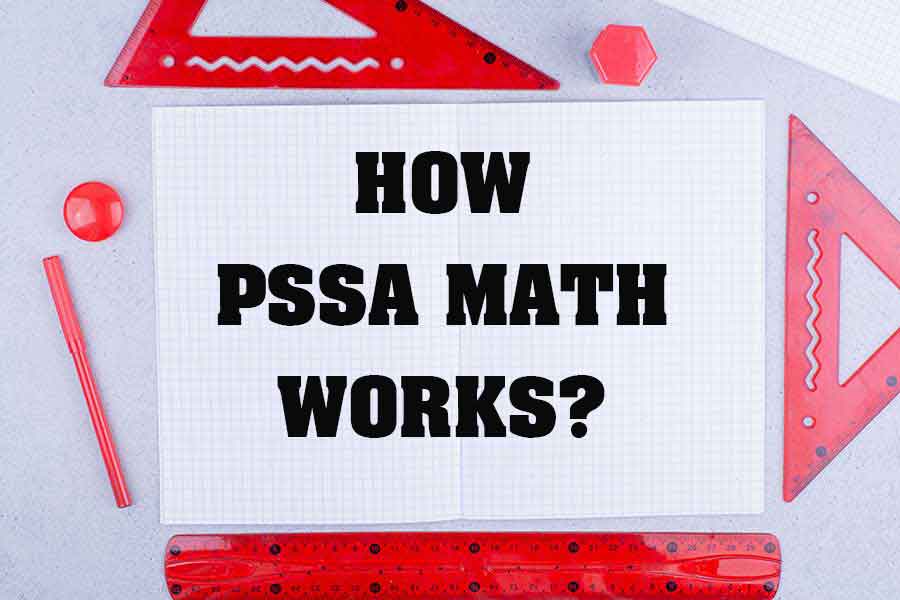
The Pennsylvania System of School Assessment (PSSA) for Mathematics is designed to assess the mathematical proficiency and understanding of students in Pennsylvania’s public schools. This standardized test aligns with the Pennsylvania Core Standards, which outline the specific skills and knowledge that students should acquire at each grade level.
Structure of the PSSA Mathematics Test
Grade Levels Tested: The PSSA Mathematics assessment is administered to students in grades 3 through 8. Each grade level has a test that is tailored to the mathematical concepts appropriate for that age group.
Content Areas: The test covers various areas of mathematics, including but not limited to:
Numbers and Operations: Understanding of basic arithmetic, number properties, and operations.
Algebraic Concepts: This includes patterns, algebraic expressions, equations, and functions.
Geometry and Measurement: Knowledge of shapes, spatial reasoning, measurement, and geometric properties.
Data Analysis and Probability: Skills in interpreting data, understanding probability, and analyzing statistical information.
Question Formats: The PSSA Mathematics test includes a mix of multiple-choice questions, open-ended questions, and constructed-response items where students must show their work and explain their reasoning.
Adaptive and Comprehensive: While the PSSA is not adaptive in the sense that it changes difficulty based on student responses, it is comprehensive, covering a wide range of topics within the subject area for each grade level.
How PSSA Math Works in Evaluating Student Proficiency
Alignment with Curriculum: The test items are designed to align with the state curriculum, ensuring that they assess the content students are learning in school.
Measuring Proficiency Levels: Student performance on the PSSA Math test is categorized into different proficiency levels, ranging from below basic to advanced. This categorization helps in identifying students who are excelling and those who may need additional support.
Informing Instruction: Teachers and schools use PSSA results to understand areas of strength and weakness in their mathematics instruction. This data helps in tailoring teaching methods and resources to better meet the needs of students.
Accountability and Improvement: The results of the PSSA Mathematics test are used for school and district accountability. They are a factor in evaluating school effectiveness and informing educational policy and decision-making.
Preparing for the Test: To prepare students for the PSSA Mathematics test, schools incorporate the Pennsylvania Core Standards into their daily instruction. Additionally, practice materials and sample questions are often used to familiarize students with the test format and question types.
Content Coverage:
Elementary Grades (3-5): Focus is on basic arithmetic, fundamental geometry concepts, measurement, and an introduction to data interpretation.
Middle Grades (6-8): Emphasis shifts to more advanced topics like algebraic expressions, equations, probability, statistics, and more complex geometry.
Question Types:
The test predominantly features multiple-choice questions, which assess students’ ability to choose the correct answer from several options.
Constructed-response items require students to calculate answers and show their work,
providing insight into their problem-solving process.
Open-ended questions demand a detailed answer, allowing students to demonstrate deeper understanding and reasoning.
Assessment Goals: The PSSA Mathematics aims to measure students’ mastery of mathematical concepts as per the state standards. The test helps in identifying students who are excelling and those who may require additional support or intervention.
Performance Levels: Student performance on the PSSA Mathematics is classified into proficiency levels – below basic, basic, proficient, and advanced. This categorization is crucial for educators to tailor their instruction and intervention strategies.
Impact and Usage of PSSA Mathematics Results
Instructional Planning: Teachers use PSSA results to guide their instructional strategies, focusing on areas where students show weaknesses and reinforcing concepts where they excel.
The PSSA Mathematics test is a crucial tool for gauging the mathematical understanding and skills of students in Pennsylvania. By aligning with state standards and providing detailed insights into student learning, it plays a key role in shaping effective mathematics instruction and improving educational outcomes.
Help empower every learner and clear the path to math success!We Provide Math Practice Books, Mathematics Workbooks, and Study Guides for State Standard Tests and Exams in Most States!
Copyright© 2023 All rights reserved Mathnotion